Michael Walters
Notes from the peninsula
Welcome!
This is my little word garden on the internet—Michael Walters, author (it’s true!). I have a speculative fiction novel, THE COMPLEX, out with Salt Publishing, and I’m deep in the writing of a follow-up. I would love it if you gave it a try.
I use Bluesky to connect with people, Letterboxd to track films, and StoryGraph to track books. Follow me and say hello in all those places.
And if you want more of my thoughts on writing in particular, you can subscribe to my posts on PATREON. There’s a Weird and Wonderful tier if you want to support me with a donation, and that now includes notes on the novels I’m reading, but I post regularly to all patrons.

Director: Sergio Martino
I can’t decide if I’m enjoying these borderline gialli. Sergio Martino knows how to build tension, as characters roam the rooms of a massive run down mansion in the Italian countryside, and it depends if I’m in the mood for overwrought acting and sleazy drama. I’m not even sure what the ridiculously long title means: Your Vice Is a Locked Room and Only I Have the Key? I suppose it means the basement, but it could also be the cupboard Irina gets locked in with Satan (the cat).
I’m getting ahead of myself. Oliviero is an abusive husband, professor and writer of novels. He has writer’s block and has become an alcoholic, abusing the women living with him. A killer murders a woman he has agreed to meet, and the police question him. Then his housemaid, Brenda, is murdered, and he forces his wifre, Irina, to help him hide the body in the basement. When his niece, Florina, arrives, she is suspicious. Her brazen sexual appetites arouse both Oliviero and Irina, but Oliviero is becoming more and more brutal with Irina, and we keep seeing a figure watching the house from the trees.
The sex in this film is deviant from the start, with the hippies willingly coerced by Oliviero into humiliating Irina, then Irina provokes him by wearing his dead mother’s dress, and he rapes her. He sleeps with Brenda, a black servant who he denigrates, then with his niece, Florina, and when Florina asks him directly if he slept with his own mother, the implication is that he did. His mother’s portrait sits above the dining room, and her cat, Satan, torments Irina, just like Oliviera does. The final act is a blizzard of switches and double crosses. Actually, his vice is surely his mother, and perhaps it is Irina who has the key. Maybe. It’s all a bit insane.
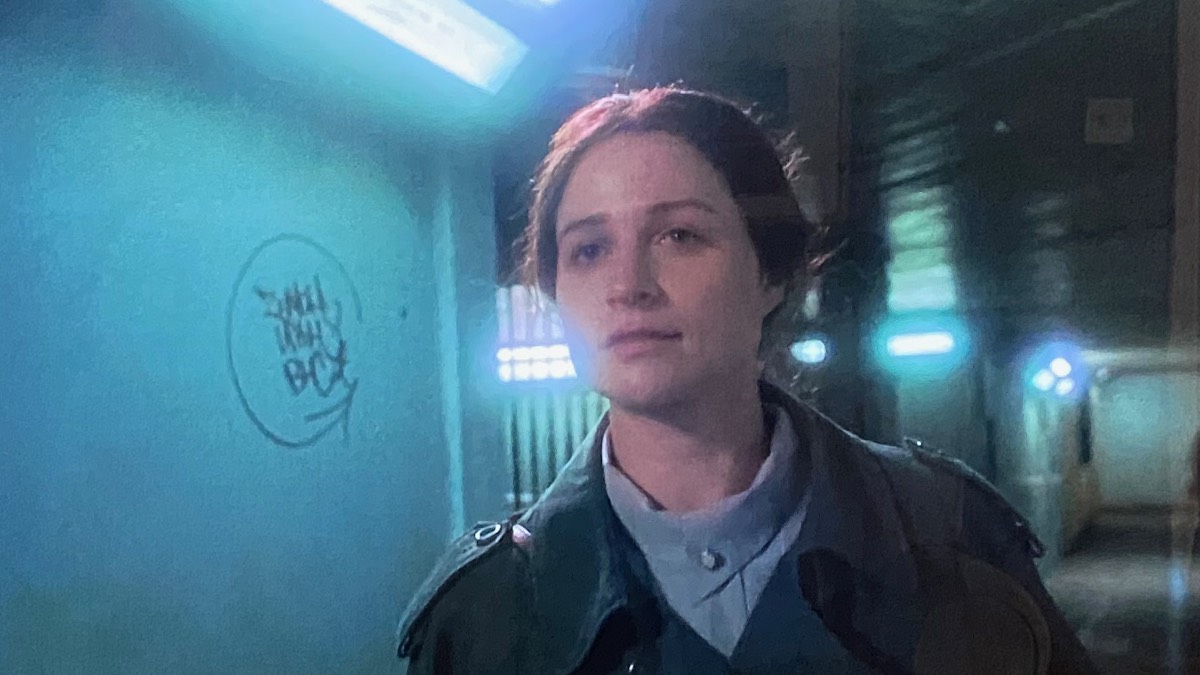
Censor (2021)
Director: Prano Bailey-Bond
Censor has been on my radar all year, since I heard about it, partly because it was set in the era of video nasties, and partly because it seemed to speak to the whole experience of watching horror films. It didn’t disappoint. Enid Baines is a censor at the British Board of Film Classification. Her parents decide it is time to have her long-missing sister declared dead. Enid is a vigilant censor who is seen by some of her colleagues as excessive, but when a man kills his wife and children, copying the gruesome death in a film Enid recently passed for public viewing, she blames herself, and her daily life, the films she has to watch, and memories of her sister, begin to bleed together.
There’s a great interview with director Prano Bailey-Bond in the June issue of Sight & Sound magazine, where she talks about the psychological act of self-censorship, and ‘the positive power of forbidden cinema’. Enid is even more censorious of her childhood memories than she is of the films she watches in work, and as her gentle ex-psychotherapist colleague says, it’s amazing what the mind can edit out to protect itself. Her parents are sweet, but massively repressed, and Enid keeps her colleagues at arm’s length, while not seeming to have any friends. She is alone with her trauma, cutting films to keep the public safe, but also fascinated by what’s in them.
The final act is clever, and funny, which slightly spoils the atmosphere, so by the end I found myself a little disconnected from Enid’s plight. The whole film is really well-crafted, with a fantastic performance by Niamh Algar as Enid, who wills into her reality that which she is desperate to be true. To quote Bailey-Bond, where she is talking about horror audiences: ‘In the fiction of the horror world, they can have what they want, when they can’t in real life.’
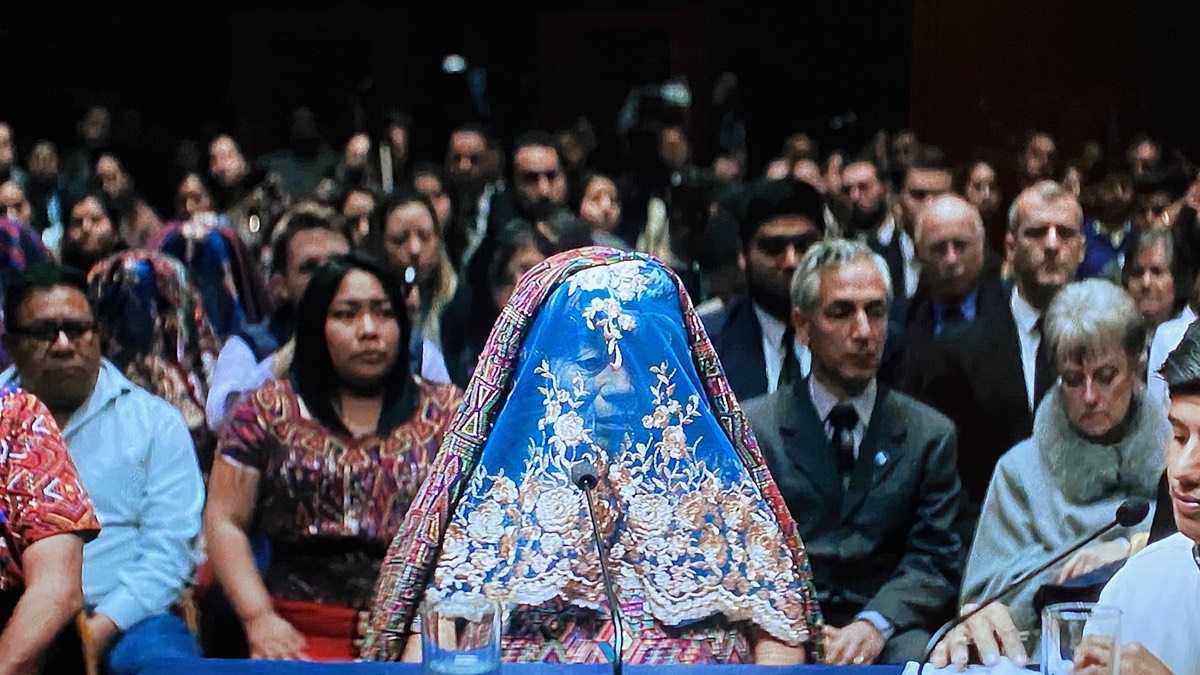
La Llorona (2019)
Director: Jayro Bustamante
Some subjects are horrific enough without the added charge of being in a horror film, so I had been avoiding watching the much lauded La Llorona. It’s about the aftermath of the trial of a general who ordered the genocide of the Mayan people in the Guatemalan Civil War. Elderly former general Enrique Monteverde is found guilty, but his conviction is overturned, and he retreats with his family to their house in the city, which is surrounded by noisy protestors. The servants all leave, and the housekeeper, Valeriana, accepts the help of a young woman from her village, Alma. Trapped in the house, strange things begin to happen to the family, and the ghosts of the past insist on being heard.
Some reviews of the film voice frustration at the slow pace and lack of scares. La Llorona explores an important historical event with commendable weight through a famous Mexican ghost story. Every shot is considered. Doing some research, the small details of the La Llorona legend are dotted all through the film, none more important than Alma teacing Monteverde’s granddaughter, Sara, to hold her breath underwater. The meaning of this becomes shockingly apparent at the end.
Over the end credits, there is a heartbreaking arrangement of the Mexican folk song, La Llorona, which means the weeping woman. She has much to weep over.
Dawn of the Dead (2004)
Director: Zack Snyder
This time last year, I took a chance on George A. Romero’s Land of the Dead, and in the summer I believed the hype and watched Zack Snyder’s Army of the Dead. I must have a hunk of moth DNA in me, because I was drawn by the good review flames of Snyder’s original zombie remake, Dawn of the Dead, an adaptation of Romero’s original script for his… Dawn of the Dead.
Ana, a nurse, wakes up to the start of a zombie apocalypse, and manages to escape her zombified partner and the chaos on her local estate. She hooks up with a police officer, Rhodes, and three other survivors, and they manage to get to a local shopping mall. More people arrive, but so do the zombies, until the mall is surrounded by tens of thousands of the undead. In trying to help a nearby friend, they realise they can’t just stay where they are and wait to die, so they concoct a plan to escape.
Why did Snyder do it? (For the money.) Why did Romero let him? (He didn’t own the rights, and the rights-holder wanted the money.) And why did I choose to watch it? (I’m saying genetic weakness.) It’s a stylish, pacey rehash of Romero’s vision, with all social commentary taken out—an action film, and a decent one. Sarah Polley, giving a strong central performance as Ana, is easily the best thing about the film, especially in the excellent opening sequence where she goes about her evening, casually missing the news reports and emergency messages, until the next morning the zombies are literally at her bedroom door. If only Snyder’s Army of the Dead had a fraction of this average film’s charm.

Director: Kevin Tenney
I might have been too harsh on Saw, but it can take it, and this is the eighteenth film of my #31DaysofHorror. I’m in a dip. To lift my spirits, I wanted a palate cleanser, but rather than go uptown, I went as far downtown as I could go, to the eighties trashy delights of Night of the Demons.
Angela and Suzanne throw a party on Halloween night at an abandoned mortuary on the outskirts of town. A disparate group of misfits arrive, and to frighten everyone, Angela has them play a seance-like party game which summons a demon through the furnace in the mortuary’s basement. The gate they drove in through turns into a wall sealing them in, so when the demon possesses Suzanne, it spreads an infection through the party-goers, and for the remaining few it becomes a fight to survive the night.
The first half is a slog—a cheesy, unfunny, teenage sex comedy. However, the second half saves the day, with some brilliant gore, jump scares, and plenty of imaginative set pieces. There’s a definite influence from Evil Dead 2, with the demon’s eye camera moving through the house, and the demon women making wisecracks. Angela dancing possessed in front of the fire, the film cutting creepily as she moves, is a definite highlight, as are all the special effects. I’m still thinking about the scene where Suzanne pushes a stick of lipstick into her nipple. Judy, who is there with the awful Jay, is dressed like Alice in Wonderland, an apt, fun touch, and the look of the demon itself references the demon at the end of Jacques Tourneur’s classic Night of the Demon. A decent Halloween choice.

Saw (2004)
Director: James Wan
I really, really didn’t enjoy Saw. Perhaps it’s because Triangle was so good, or my age, or the film’s reputation, although this first one is considered by many to be a bit of a horror classic. Two men wake up chained by the ankles to radiators on opposite sides of a locked room. There is a dead man between them with his brains blown out, clutching a tape recorder. Each man has an envelope containing a tape in his pocket, and when they play them, they hear the voice of their captor explaining the rules of the game he demands they play. Gradually they reveal how they came to be in the room, and why the Jigsaw killer might want to teach them a lesson.
Honestly, it’s like a cocaine-addled inverse Seven. The acting is hammy (I know it must be hard to believably play a man who’s just sawn his own foot off, but still), the jumping around through time annoyed me, and the games within games nature of it felt manipulative and weak. Triangle made an incredibly complex plot feel meaningful and emotional, but this just made me feel grubby. Perhaps, as Danny Glover says in another franchise he is part of, I’m getting too old for this shit.
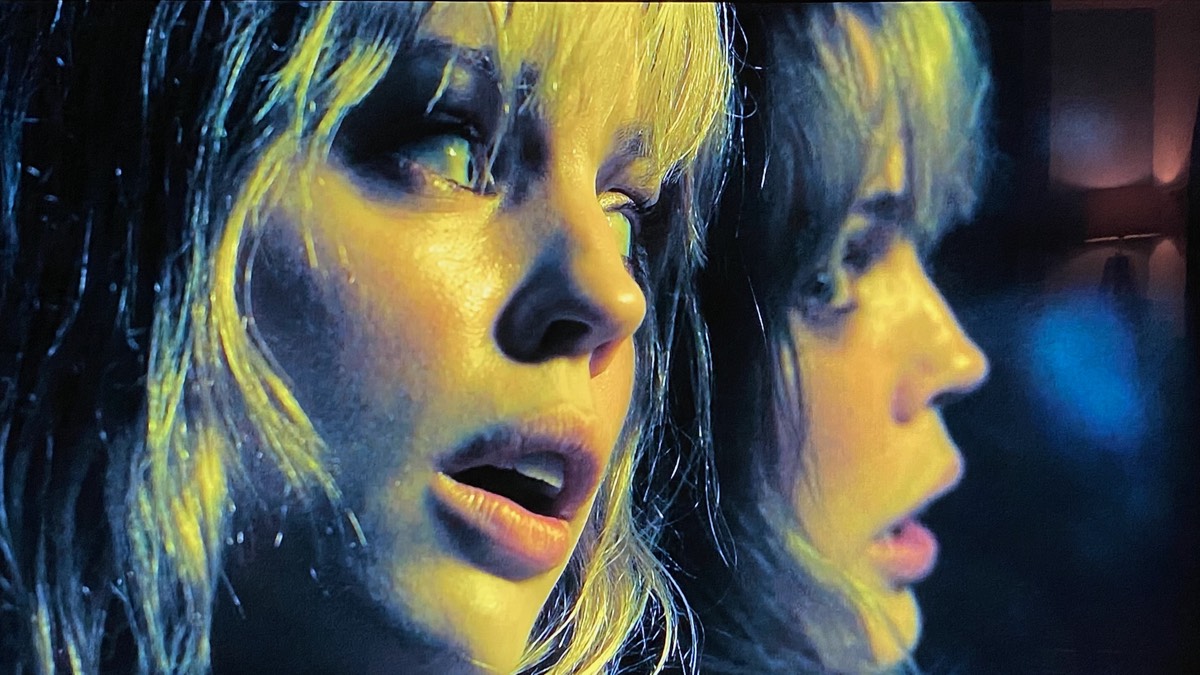
Triangle (2009)
Director: Christopher Smith
One of the reasons I do #31DaysofHorror is to catch up on my ever-growing list of films to see in the hope of finding one that blows me away. Triangle is this year’s first such nugget of gold. Jess is a very stressed single mother with an autistic son. She has agreed to meet Viktor, who has asked her to go out on his yacht with some of his friends, but a freak storm capsizes them, and they are rescued by a passing cruise ship. Disturbingly, there are no passengers or crew, and Jess experiences intense déjà vu as they explore the labyrinthine corridors and decks. Then a masked figure starts picking them off.
It’s impossible to write a post like this without spoiling the premise, but then I was switched on to it by a brilliant Projections Podcast episode which talked about it in depth, and knowing what it was didn’t spoil my enjoyment at all. It’s a time loop story, but what’s wonderful about it is the loop is seems to be independent of Jess, who begins to see multiple versions of herself and Viktor’s friends, setting up a gloriously complex plot that still makes total sense, and at the end hits you with a gut punch.
I wrote a full page of notes after watching it, thinking through what it all could mean, which shows how excited I was. It’s about the patterns we find ourselves in, the bad habits we can’t break, especially with the people we love. Jess’s trauma creates a loop in time, a knot she can’t untie herself from, and the cruise ship’s name, Aeolus, aludes to Sisyphus, who was punished by Zeus for twice cheating death and had to push the boulder up the hill for eternity. I spent a good hour trying to work out the point at which she could break the loop, but even at that moment, her propensity for violence doesn’t allow her to behave differently. Hell, indeed. Heartbreaking.
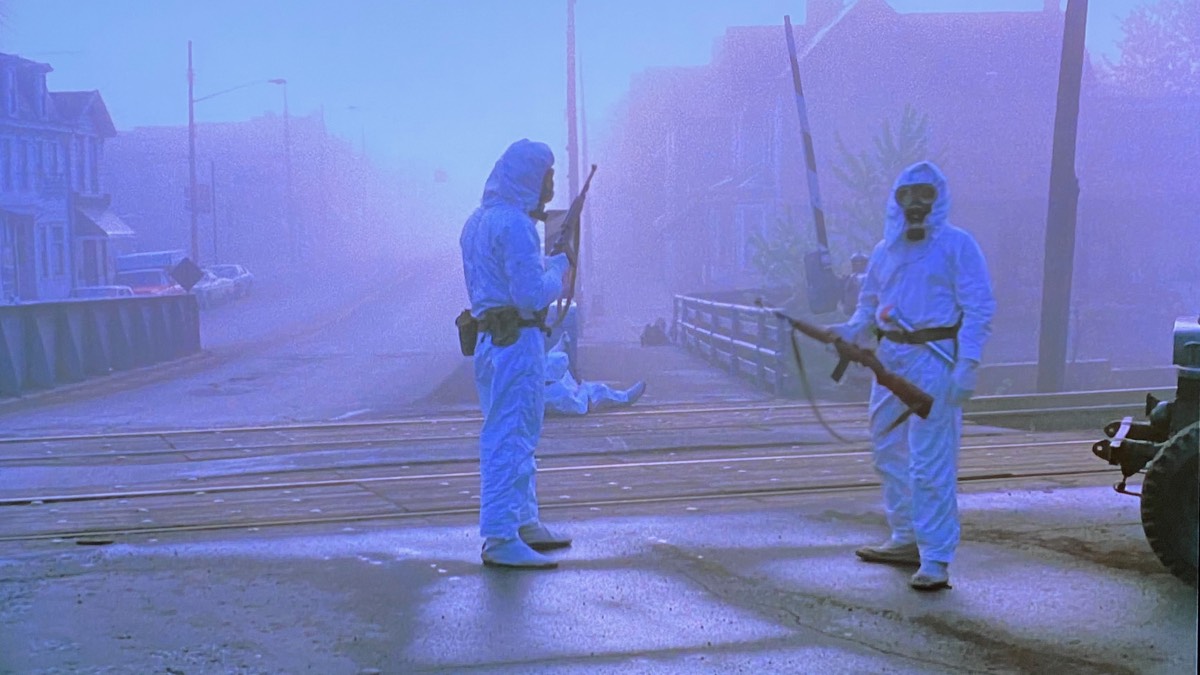
The Crazies (1973)
Director: George A. Romero
It’s hard to know what to make of this period of George A. Romero’s career. He was experimenting, I guess, because how else does an artist follow up a debut like the seminal Night of the Living Dead? He made There’s Always Vanilla, a comedy-drama, then Season of the Witch, a feminist witchcraft film, then this, his fourth film, The Crazies. A military developed virus is accidentally released into the water supply of Evans City, Pennsylvania, and the military attempts to impose martial law to contain its spread. Some citizens immediately display symptoms, most allow themselves to be herded up, and others revolt.
The narrative has two stories in parallel—the military and doctors trying to control the situation, and a small group of locals, including ex-Green Beret David, his pregnant wife Judy, their friend ex-soldier Clank, and a father-daughter couple they meet along the way, Artie and Kathy. In the general hysteria, it is hard to tell who is acting strangely, which is how the virus presents itself, and Clank’s aggressive behaviour could just as easily be PTSD from Vietnam. Romero shows the army as full of ordinary people trying their best to follow orders in awful conditions, and the politicians and analysts in Washington wrestling cynically with ways of both solving the problem and covering it up, including dropping a nuclear bomb.
It’s a decent horror film that lacks subtlety or pizazz, instead moving quickly along a rather plain arc. The final scenes have more emotion in them, and perhaps the coldness of the rest of the film is my problem with it. In too many places it’s a chilly tale of white-suited men in gas masks shooting at people and pushing them around, while officers and scientists shout at each other, but the human drama is decently played, and there is some potent imagery.

Director: George Mihalka
My Bloody Valentine is one of those films that is talked about with reverence in horror circles, but until I got back into horror in 2017, I’d never heard of. In Valentine Bluffs, Canada, twenty years previously, the mining town’s annual Valentine’s Day dance is marred by an accident that leaves several miners trapped underground for weeks. Only one survives, Harry Warden, but he is driven insane. In the present day, the mayor decides to restart the cancelled tradition of the Valentine’s Day dance. At the same time, T.J. returns from California unexpectedly and tries to rekindle his relationship with Sarah, who is now with T.J.’s best friend, Axel. After a string of brutal killings, the sheriff cancels the dance, but the youngsters decide to have a party anyway in the mine’s canteen. T.J. and Axel’s jealous rivalry is overshadowed by the return of Harry Warden, who starts to kill everyone at the party.
It’s a unique film. The young male characters are miners, and it was exciting to see working class characters and locations in a film like this, partially because it reminded me of my steelwork town roots. It’s unashamedly chasing slasher audience money, following previous date-based titles like Black Christmas (1974), Halloween (1978), Friday the 13th (1980) and Prom Night (1980), but it has a delicious charm, because the characters have a raucous authenticity that transcends the occasional acting lapse.
The deaths are incredibly well staged, and the atmosphere once we get down into the mine is perfect, probably because it was filmed underground in a real mine. The killer wears a terrifying miner’s suit and mask that gave me goosebumps. They don’t make them like this anymore.
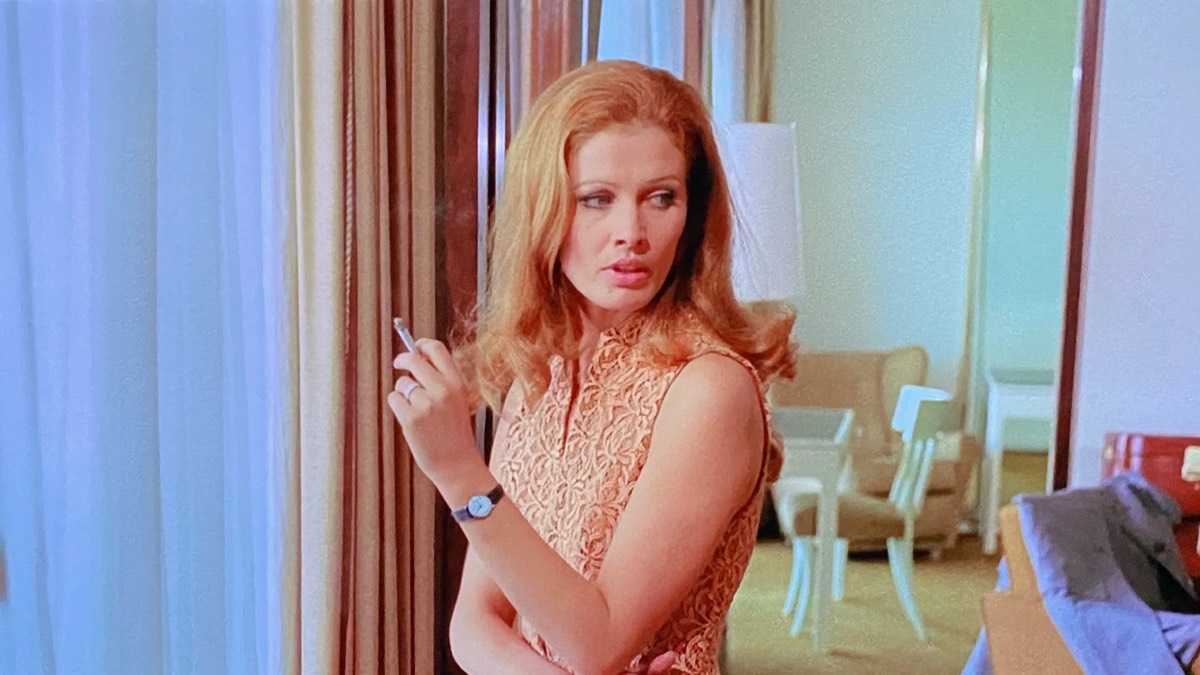
Director: Sergio Martino
The Case of the Scorpion’s Tail involves Lisa Baumer, whose husband is killed in a mid-air plane explosion, and her inheriting from him a million dollars. They had an open marriage and lived in separate countries, and soon people are coming out of the woodwork to extort her out of the money. She leaves London for Greece to sign legal documents, and the insurance company send an investigator, Peter Lynch, to follow her. She takes out the million dollars in cash (!) with the plan to carry it in a bag to Japan, where she is to meet a mysterious other person, but before she can leave, a killer begins to pick off anyone with connections to her dead husband.
Sergio Martino made this film the year before his witchcraft and cults movie, All the Colors of the Dark. I thought it would be a giallo, or at least a proto-slasher, but it is far more a crime-thriller, making it another 31DaysofHorror outlier. Having said that, Martino shoots much of it like a horror film, and his handheld camera is often roving, whether on his actors shoulders or following them up staircases, and he is fantastic at composing shots that leave empty spaces where a threat could be lurking. It’s a fun film.
Many films were made in this period that were set in European countries, like this one, aiming for audiences who were just beginning to travel further on holiday with cheaper airfares. My mum only flew abroad once in her life, in 1969, for a package holiday in Torremolinos. A couple of years ago, my gran was clearing out her house to move to a nursing home, and she asked me to choose one object as a keepsake, and without knowing its history, I took a wooden bull with a bell around its neck from her kitchen wall. It’s on my kitchen wall now, and of course that bull was bought on a cheap holiday with my mother to Torremolinos, which is my tenuous personal connection to the similarly twisting The Case of the Scorpion’s Tail.